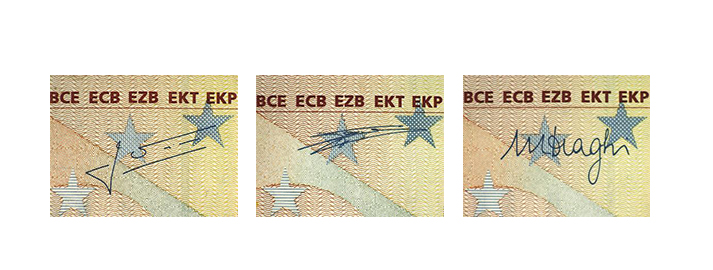On 1 January 2002, the seven denominations of the first series of legal tender banknotes were put into circulation in the euro area: €5, €10, €20, €50, €100, €200 and €500.
These banknotes, based on a design by Robert Kalina, embody architectural styles representative of seven eras of European cultural history and are identical for all countries that have adopted the euro as their currency. You can find more information by clicking on each of the banknotes in the image at the beginning of this section.
These architectural styles are represented by images of windows and doorways on the front, and of bridges on the back of the banknote, which are a symbol of openness, cooperation and communication between Europe and the rest of the world.
In addition to the main image of each architectural style, the seven banknotes incorporate a series of common elements: the name euro, written in both Latin (EURO) and Greek (EYPΩ) characters; the initials of the European Central Bank (ECB) in five linguistic variants (BCE, ECB, EZB, EKT and EKP), covering the 11 official languages of the EU in 2002; the symbol ©, indicating the copyright; the EU flag; the map of Europe and the signature of the President of the ECB (either Willem F. Duisenberg, Jean-Claude Trichet or Mario Draghi). All the banknotes of this series are equally valid regardless of the signature they bear.

Furthermore, visually impaired users were consulted during the design phase, which led to the inclusion of their requirements in the final designs.
